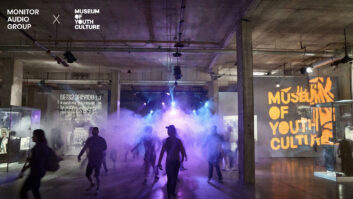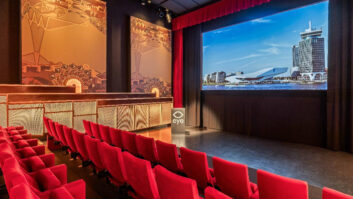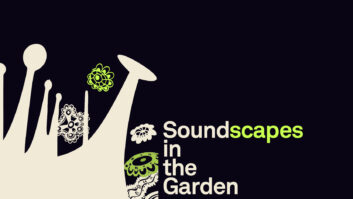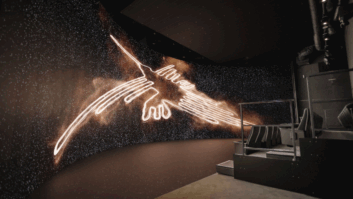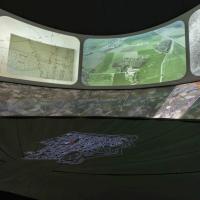
The newly opened In Flanders Fields Museum in Ypres, Belgium interprets the stories of the First World War as seen in the Flanders region using modern museum techniques and multimedia for visitors of today and tomorrow. projectiondesign F22, F32 and F35 WQXGA projectors and WB processors were provided by specialist museums system integrator, Ocular BVBA for use in the Belle Epoque, First Battle, Ypres Salient and Third Battle exhibit areas with the aim of stimulating a more in-depth look at how museum visitors deal with war and peace.
On entering the museum, a Poppy Bracelet is given to all visitors. As visitors move around the beautifully restored medieval cloth-hall building in the city’s main square, a micro-chip inside their ‘Poppy’, a globally recognised symbol of the First World War, provides them with video projections, interactive touchscreens and soundscapes used to re-create the pain and tragedy of the war.
“To really embrace the whole public with the impact of landscape then I think the best way of doing it is with projection,” said Piet Chielens, coordinator, In Flanders Fields Museum. “That is what we’ve done here. People are really thrilled with the experience and that is largely due to the techniques we’ve chosen to present it.”
“Every projection surface in this museum is either curved or has a rather unusual shape for projection, which made this a technical challenge,” said Nicolas Vanden Avenne, managing director at Ocular BVBA. “Along with projection, we use the blend and warp functionality of the WB processors throughout the museum.”
As visitors enter the museum, they walk through the Belle Epoque exhibit, which highlights the period of time leading up until the war. In this area, two F32 projectors are used to project footage on to a curved structure that looks like a forest of wood panels.
In the First Battle exhibit, an F35 WQXGA projector is used to project from the ceiling on to a 3D scale model map of the battlefields from the North Sea to the front line. Viewers can watch the deployment of allied troops in the city of Ypres and the first battle from an eagle’s point of view.
Ypres Saliant uses three projectiondesign F22 projectors and WB1920 processors onto a 170-degree curved screen to observe the progress of the war as if travelling in a balloon high in the sky. Footage includes a view over buildings and deployment of troops around Ypres. The content is a combination of historical footage and custom made film.
Perhaps the most harrowing exhibit, The Third Battle, uses four F22 projectors onto a curved screen and ceiling to provide symbolic visuals with narration by nurses, doctors, soldiers and priests about one of the bloodiest battles in the First World War.
“To achieve the exhibit areas,” Vanden Avenne continued, “we had to look for a partner that could do the engineering of our projections and cooperate with us during the building of the museum. We turned to projectiondesign because of their high-performance projectors for each exhibit area and choice of lenses.”
“As the museum is open ten hours a day, we wanted to have reliability, longevity with no image degradation. projectiondesign guaranteed that their projectors would remain consistent during heavy use.”
